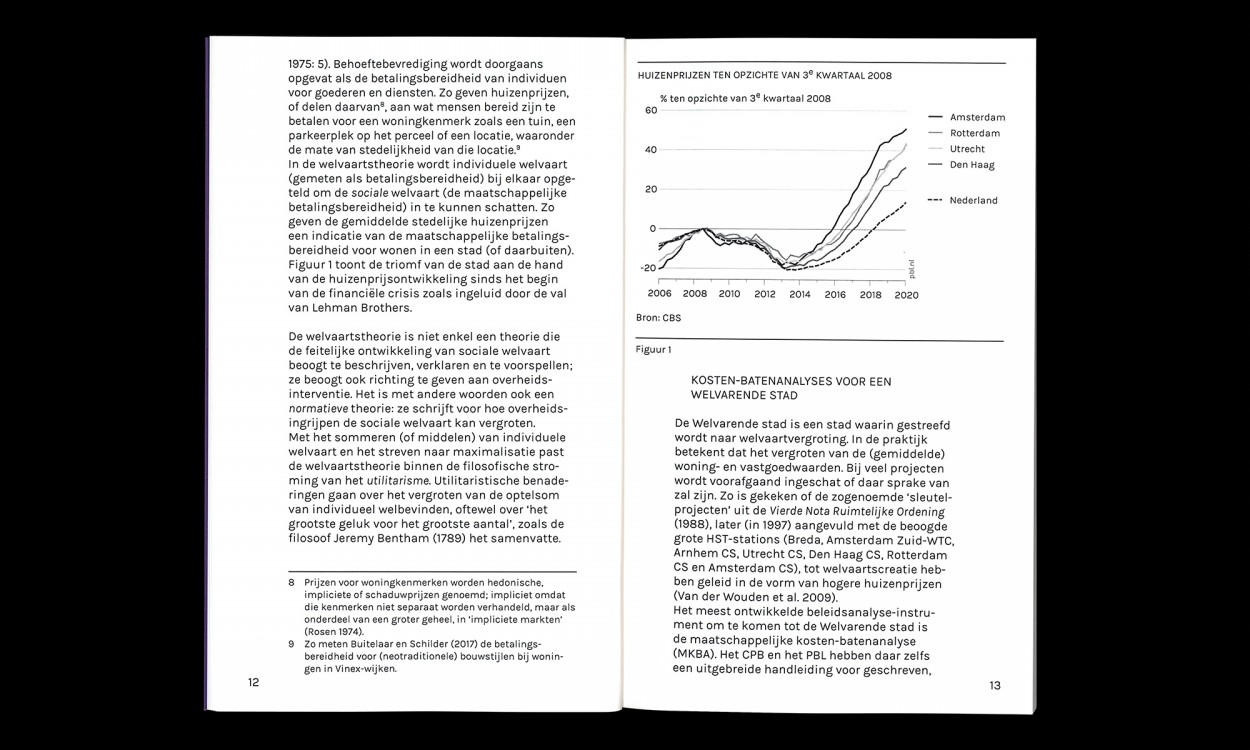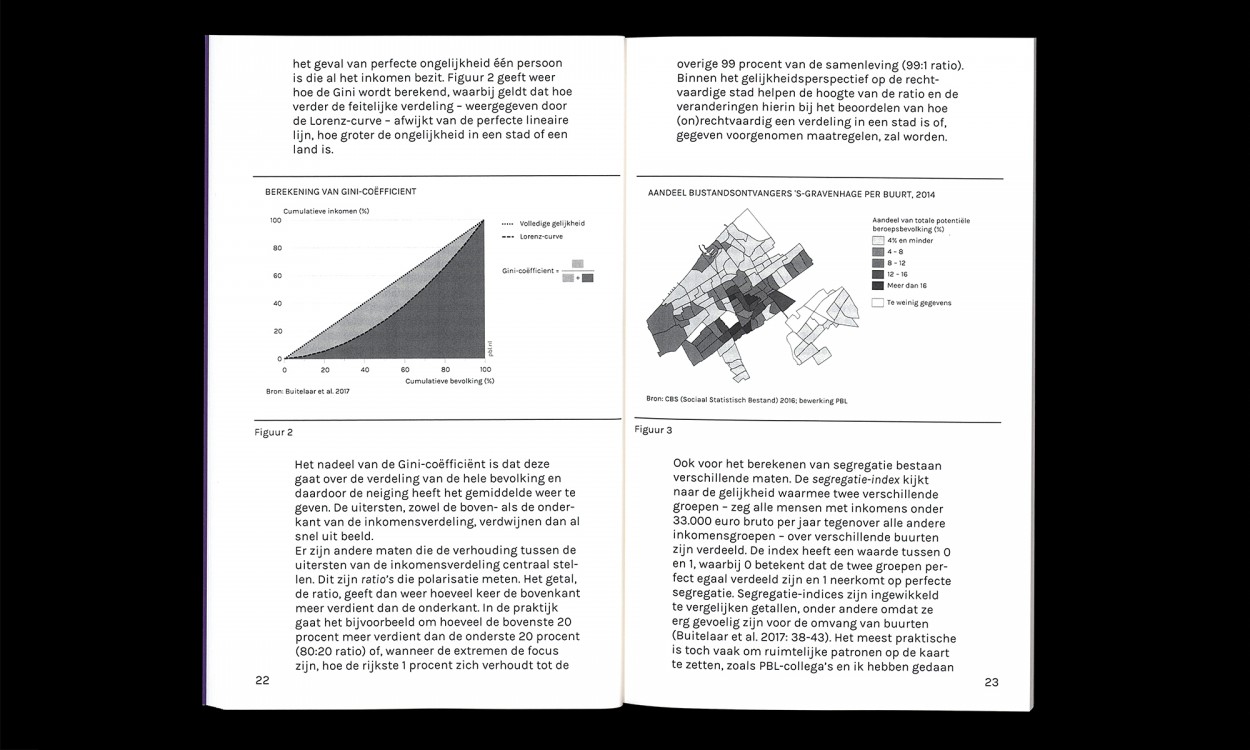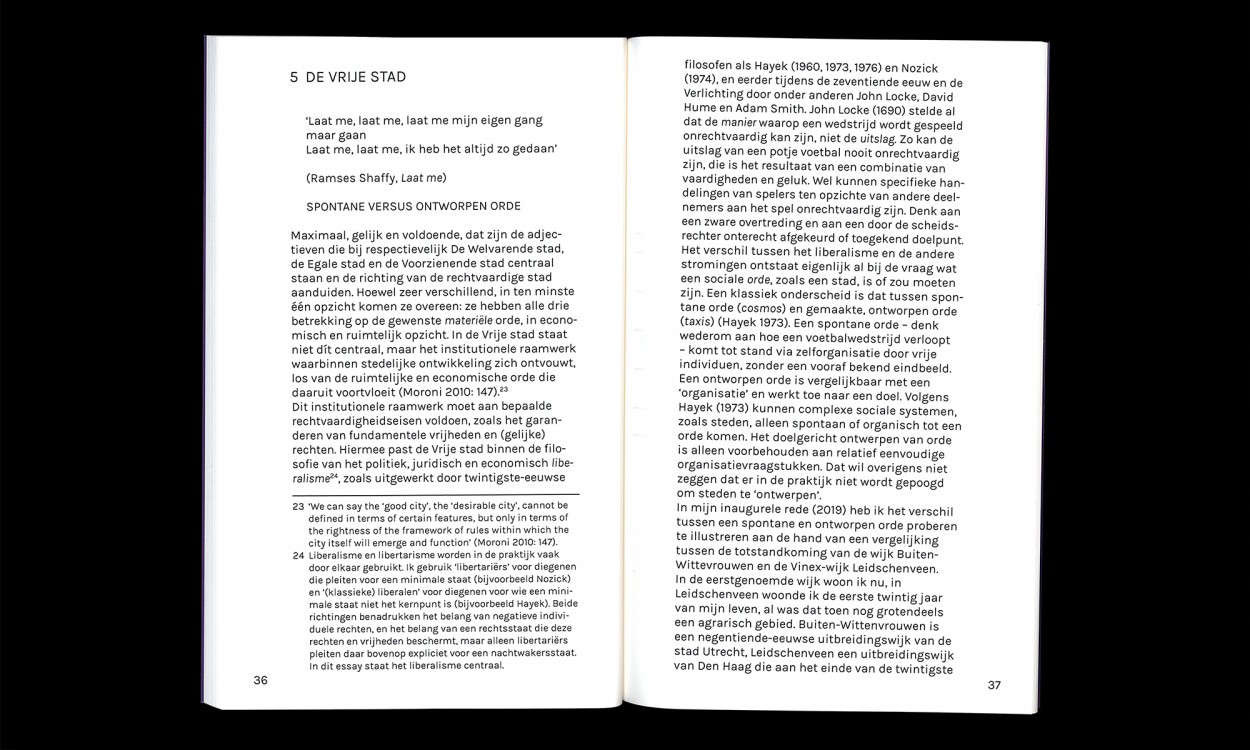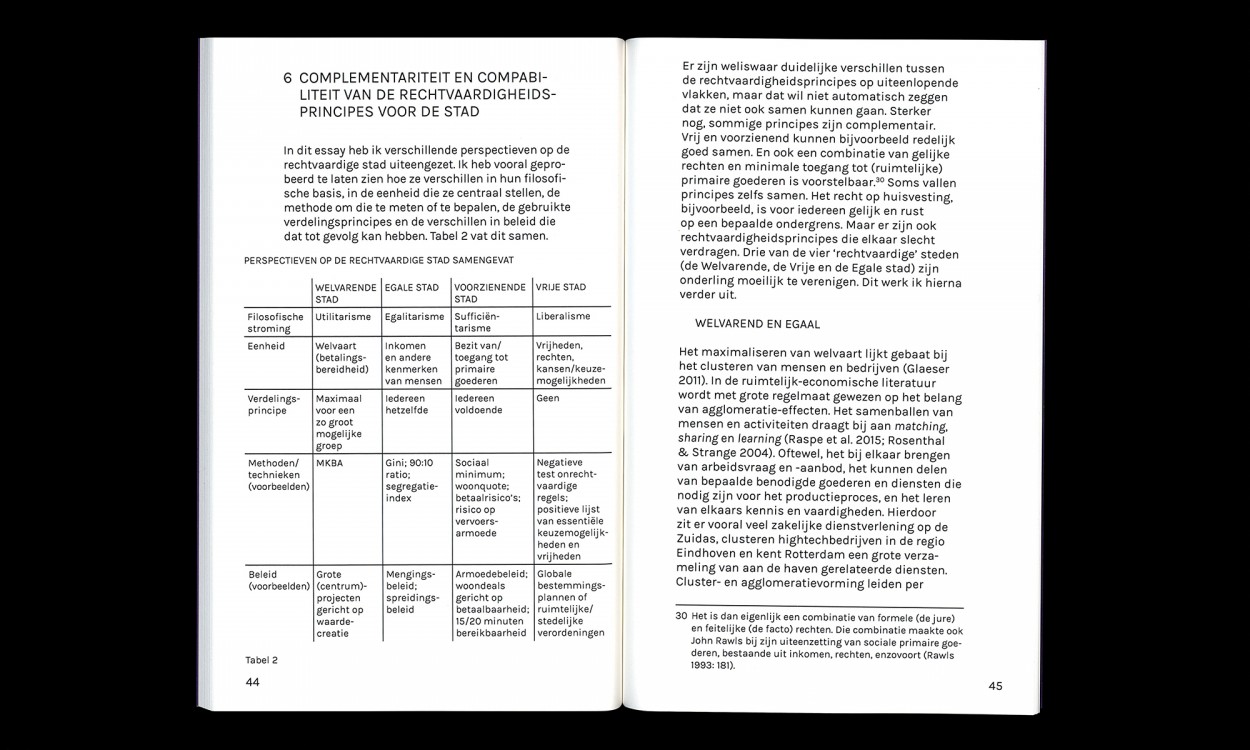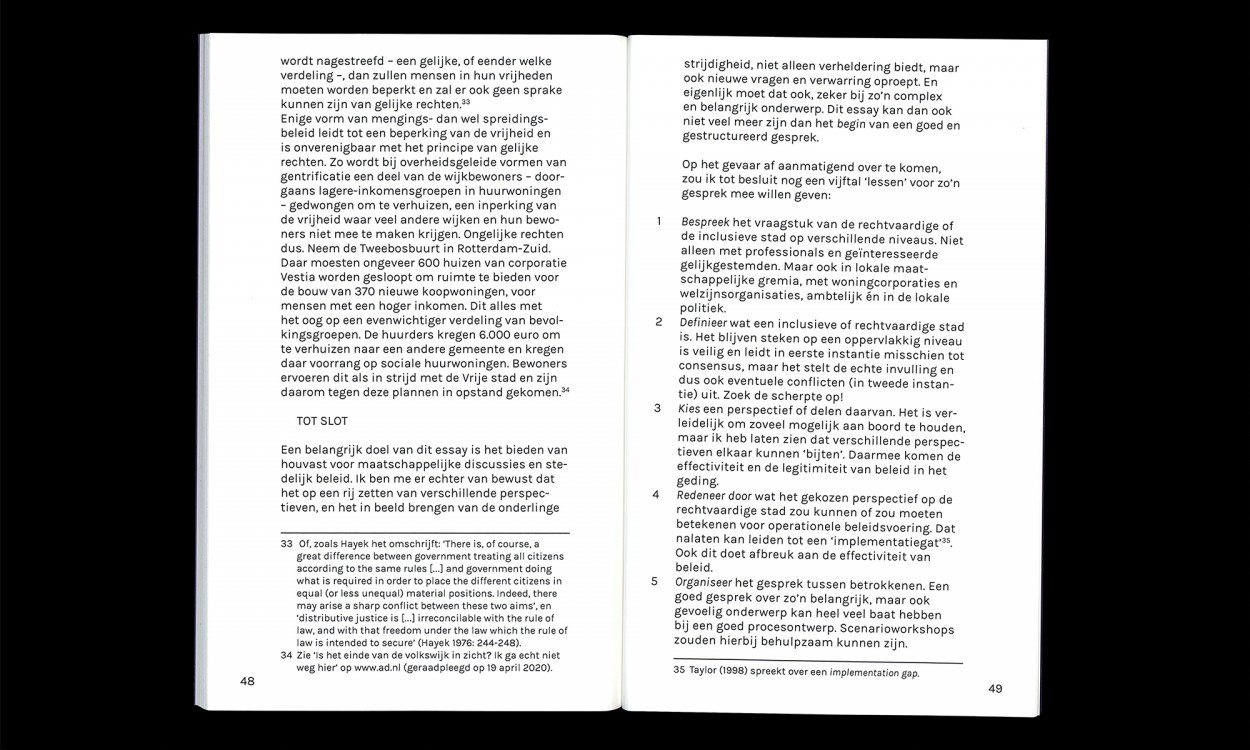Maximaal, Gelijk, Voldoende, Vrij
Vier perspectieven op de rechtvaardige stad

The digital version of this essay is available to the reader for free. Distribution however is only permitted by referring to the download-links on this website. Please note: this essay is only available in Dutch.
Author: Edwin Buitelaar
Design: Meeusontwerpt
Series: Stadsessays
Bookstore: Not available through CB, but directly from the publisher, low discount
2020, trancityxvaliz | paperback | 57 pp. | 13,5 x 21 cm (b x w) | Dutch | ISBN 978-94-92095-91-6
This publication was realisedin collaboration with the Netherlands Environmental Assesment Agency (Planbureau voor de Leefomgeving, PBL).
Press
- (Only in Dutch) Click here to read the blog post by Wim Derksen in response to 'Maximaal, Gelijk, Voldoende, Vrij' for Platform 31 (24 November 2021)
Who owns the city? Everyone, would ideally be the answer. But what is it that everyone could or should be entitled to? And above all, where? What is fair in determining who gets what in the city and where? "The just city" is often mistakenly seen as a concept that is open to only one interpretation. Different and conflicting perspectives on what the 'just city' should be are constantly being pursued. Four of these perspectives - the prosperous city, the smooth city, the supplying city and the free city - are elaborated in this essay and explained on their application in urban policy.
The gatering of multiple perspectives offers room for discussion and for better-founded policy. In doing so, this essay provides policymakers with tools to give a more difficult-to-grasp concept such as a "just city" more specifically and consciously. It also provides guidance for social debate as well as for the implementation of effective and legitimate urban policy.
Edwin Buitelaar is a researcher in urban development at the Netherlands Environmental Assessment Agency (PBL) and professor by special appointment in the Department of Social Geography and Planning of Utrecht University. His research concerns processes of housing-, real estate- and area development as well as the results thereof, such as segregation, inequality, gentrification and affordability.

